The audiophile system: Rega Io + Rega Kyte + Rega RP1 = Rega System One
Whether as a first system for beginners, a second system for the hobby room or a third system for the weekend residence: the Rega System One is an inexpensive, expandable complete set for record listeners, consisting of a record player, amplifier and loudspeakers. Do special sound synergies arise in such a chain? What is the weakest link? And where does the upgrade path lead? LowBeats provides the answers.
To get straight to the point: the Rega System One contains nothing that was not previously available separately. However, it underlines two facts: First, that Rega, which has been a full-range supplier with brilliant developers and exemplary vertical integration for decades, should also be recognized for its amplifiers and speakers and not always just for its turntables. And secondly, that despite the cross-manufacturer compatibility on which all hi-fi is based, there can still be advantages if you combine components that not only fit together technically and fundamentally, but also philosophically and sonically.
We also and especially expect such synergies from System One, whose manufacturer has always distinguished itself through a particularly straightforward design philosophy and the stringent pursuit of it. The tight budget – each component is the cheapest in the Rega catalog – means compromises have to be made. But they may say more about the way the people from southern England work than the more expensive premium solutions: the System One, a Rega distillate that has been distilled three times.
The System One-specific parts on this system are limited to a leaflet that outlines the assembly of the three components, a set of completely normal loudspeaker cables and a common outer box measuring 50 x 45 x 70 cm. Inside are: The Io integrated amplifier, the Planar 1 turntable and a pair of Kyte bookshelf speakers. The first complete Rega system thus falls into one of my favorite hi-fi categories: systems that the owner can easily move from A to B alone and in one trip.
However, the Rega System One disqualifies itself for the increase “by bike” because of its unfavorable pack size. It would probably have worked in the individual boxes: boxes on the luggage rack, amp in the backpack, record player upright on the pole. Unfortunately, the Brits just put it on the player's original box. The Planar 1 sits absolutely securely in its place in the common box in the usual styrofoam shells, but without it it is not really suitable for travel or even shipping. That's the only truly nonsensical decision on System One - not primarily because of the special interest topic of two-wheeler portability. But because it is precisely the player who is most urgently dependent on his own packaging, should the British power trio one day, in the indefinite future,
In contrast to typical "real" complete systems, such a later resolution at Rega is quite realistic. The Planar 1 record player, Kyte loudspeakers and Io amplifier are, each in their own right, high-quality hi-fi components that also hold their own when sold separately. And who concentrate so consistently on their respective basic function that they no longer age significantly.
Anyone who buys a System One today and decides to upgrade the player in ten years' time can make a young hi-fi enthusiast happy with their old Planar, no ifs or buts. It is extremely unlikely that purist turntables will look completely different in any way. Or gotten dramatically better. It will be the same with the Io, which already has a tradition that stretches far back into the history of student high-end - to devices like the Mission Cyrus 1, the Naim Nait 1, Creek 4330, Musical Fidelity A-1 or also Rega's own Brio 1. Irrespective of the prosperity they may have achieved in the meantime, audiophiles still treat such affordable amps with respect - often also in the knowledge that the feeling of happiness of listening to the first really good system of their own can no longer be imitated later, even with a high-end budget.
The amplifier of the Rega System One: the Io
Unlike the speakers and the player, we have already extensively tested the Rega Io. That's why we're only introducing it here briefly: A compact integrated amplifier in an all-round closed aluminum housing that offers connections for a pair of speakers, headphones and three sources. One of the three inputs is an MM phono input, which plays far better than is usual in this price range.
The amplifier circuitry of the Rega Io largely corresponds to that of the larger Brio, but has to be accommodated in an even smaller space. The bottom of the device serves as a heat sink. The entire case heats up very clearly from there at higher continuous volume levels, but this is not a problem.
The Io can be remote controlled and comes standard with the sound genes of its big brother Brio. It is also almost the same in terms of circuitry and is actually only slightly inferior in terms of performance: 2 x 30 watts at 8Ω and almost twice as much at 4Ω - that's still enough for all musical tasks, as long as you're not completely resistant to advice when buying loudspeakers. For a full tribute to the Io's sonic capabilities, I'd like to refer you to my original post here on LowBeats .
In summary, I would describe the sound as extremely lively, almost tube-like, transparent and wiry-dynamic rather than full-soft or even laid back. In other words, just as you have always imagined a Rega amp, only without the sometimes annoying bitchyness of older generations in the interaction with the loudspeaker: With high-impedance, less complex loads, a smoothly eloquent Dr. Jekyll, for example, old Brio from the '90s could suddenly mutate into a harshly barking Mr. Hyde if the loudspeaker didn't meet him far enough.
Anyone who still remembers this should urgently borrow an Io - and then be amazed at how fearless and balanced the little Rega drives even demanding sound transducers. Of course, without sacrificing the direct, dancing, agile dynamics that are typical of Rega, which always makes other amps seem a bit lethargic and down-pitched in comparison.
The loudspeakers of the Rega System One: the Kyte
The Io should have an easy time with the Kyte anyway. The Rega box – priced at 650 euros per pair – is the latest interpretation of a tried-and-tested speaker concept: even the first Kyte from the 1990s worked with a 12.5 centimeter small woofer and paper membrane material, which was extremely unpopular at the time. The driver has been refined and improved over the years, the production has been completely brought in-house, but the key data remains the same: five inch diameter, relatively flat cone made of light, stiff, low-resonance paper, small but four-layer wound, highly efficient voice coil with amplifier-friendly 6Ω impedance as well as a fixed hard rubber phase plug in the center of the driver instead of the usual resonating dust cap.
A fine, lightning-fast mid-bass driver that has no competition to fear, especially at the upper end of its range, and over the years has helped numerous Rega speaker models to achieve precisely articulated, fast-paced, grooving bass. The small cardboard cone could almost be considered a full-range driver, but hands over the high-frequency work to a highly qualified competitor: the ZRR tweeter, also made by Rega, a small, air-cooled fabric dome.
ZRR stands for Zero Rear Reflection: The drive of the tweeter has a cleverly designed, hollow pole core that very effectively absorbs sound radiated from the rear. This should significantly reduce discoloration caused by reflections arriving at the back of the dome with a delay. In fact, the treble of the Kyte sounds pleasantly fine, free and unobtrusively alive. And its fragrant openness is reminiscent of the small Scan Speak domes D2010, which, for example, my speaker companion Naim SBL, which I had used for decades, brought with me.
Cast housing made of phenolic resin: Not pretty, but extremely useful
The Kyte case takes a little getting used to: It's made from a matte black injection-moulded plastic tub that's about as glamorous as the rear bumper of the early '90s VW Passat B3 sedan, but also as tough. Comparable commercial vehicle charm has so far been more in the PA area, where rough handling is normal and a favorable ratio of weight, volume and strength is crucial. However, Rega does not use the usual ABS for the Kyte body, but a bone-hard phenolic resin duroplast, which, once polymerized, cannot be deformed by anything - as ancient light switches and sockets made of this material show.
The housing is very thin compared to a wooden equivalent, but only responds to knocks with a bone-dry "tack", next to which many a wooden box behaves like a xylophone. The acoustic neutrality of the Rega housing is based not only on the hardness of the plastic, but also on its unexpectedly complex inner workings: the side walls, base and lid are doubled with ceramic tiles and these are braced together with struts across the housing. There isn't much movement when you knock, and even when listening to music, regardless of the volume, you have trouble feeling any vibrations on the case walls. The bottom line is that the Kyte cabinets are more "Rega" than any wooden enclosure could ever be: Light, stiff, low-loss - in Southend-on-Sea that's the design trinity. It would not surprise me,
Only the front baffle with the two drivers screwed into it is made of wood or fibreboard. A grey, satin-matt plastic lining discreetly hides the baskets and screws and prevents curious testers from briefly removing the bass to peek inside: After opening, the cover will probably have to be replaced. We also believe that the box has a high-quality crossover, whose coils Rega even winds itself. Likewise, not only is the last assembly done in England, but the housing is also cast at a company in the UK. You can tell the upfront cost of this part was huge - molds this size cost a lot of money. But the Kyte is one of the very few boxes in its price range which manages completely without Far East production. However, this can only be worthwhile with correspondingly high quantities - which we wholeheartedly treat the Kyte and the System One to.
A self-adhesive plastic film masks the chassis mounting screws and gives the Kyte baffle a uniformly smooth finish. If a driver needs to be replaced, a new foil is put on it after the change.
The fact that the case walls converge a little at the back could easily be sold by the British as a design trick against standing waves. However, the opening angle is primarily due to the casting technique: With exactly parallel walls, you could no longer get such a workpiece out of shape. Since its bottom is also sloping, the box stands with the baffle slightly angled backwards. Where this does not make sense (e.g. on a shelf or other slightly higher placement), the supplied, screw-on plastic supports place the boxes exactly vertically. Optional, stable steel bases also fit the same threaded bushings, which should give the Kyte an optimal stand on speaker stands and the like. In the test, we did without it and simply fixed the Kyte on the stands or furniture with BluTack adhesive dough.
Last but not least: Rega Planar 1
But the most beautiful amp-cabinet combo would be nothing without a first-class source. The importance of the record player cannot be overestimated, especially with analogue systems – but in view of the limited budget, you still have to save. The Planar 2 and Planar 3 that have been sold by the millions have already proven that Rega can make inexpensive turntables sound fantastic. For a few years now, the one-model has also fit under the two-model, initially as the RP-1 and now under the name Planar 1.
Like all Regas, the P1 is a lightweight, sporty, tight rack-mounted turntable with a rigid chassis. Compared to the P2, the other plate is the first thing that catches the eye: no greenish-clear float glass rotates under the usual thin felt mat, but pitch-black phenolic resin. It's not as pretty as glass, but it's definitely more elegant and more stable over the long term than wood fiber materials such as MDF or HDF (which was used on the P2 for a while), and has significantly less resonance than the thin aluminum covers that are the standard on players from Chinese OEM sources.
We don't know of any better record player than the Rega Planar 1 for 400 euros. And there are few that are just as good: the New Horizon 121 would come into question, with a better drive but weaker arm. Substituted for the Rega chain, he did not bring any decisive advantage. The chassis of the newer P1 is no longer high-gloss as it was at the beginning, but has been black or white with a satin finish since 2020.
By the way, anyone who fears static phenomena in view of the "plastic plate" should experience a surprise with the P1: Not once did I have to pluck the wool mat from the vinyl disc when turning the record, while this happens regularly with the larger glass plate Regas. Another potential advantage of the phenolic resin plate is its surface, which can be precisely defined during production: mirror-smooth on the edge and underside, the plastic under the mat has a rough, non-slip structure that really interlocks with the felt and ensures very good grip.
The GRP sub-platter with a pressed-in steel bearing shaft has been around since the beginning of the Rega era, including on the two- and three-seater models. Nevertheless, the British occasionally work on details. The current example only has twelve slightly raised teeth instead of a continuous ring. The Subteller is driven by the tried and tested combination of a synchronous motor and a short round belt. Although it looks like a normal O-ring, it is made from a different material and to far tighter tolerances, made especially for Rega by a – logically – British rubber specialist. The synchronous motor runs on 24 volts AC, which it draws from a plug-in power pack.
Neither too fast nor too loud
In view of the large amount of outdated and generalized “information” about Rega players, this paragraph deserves its own heading. Because the current P1 with standard plug-in power supply, original belt and inner plate runs neither too fast nor with an inordinate engine noise. I've had several copies of the player here lately, all of which were only a tenth of a percent ahead of the game when playing (taking into account the needle friction). To be more precise, no one in this price range runs at the target speed. And nobody asks for that. It's the same with the running noise: With all inexpensive turntables, the motor is the number one source of interference. Synchronous motors vibrate at the frequency of their drive voltage and its multiples (50, 100, 150 hertz), DC motors tend to whine and sing,
Crucially, these by-products don't sneak into the music signal. And the P1 succeeds quite impressively. Especially when you consider that Rega sticks the engine very hard to the frame instead of hanging it up softly in some way. In the test, even with very well pressed records, I was not able to discover the remains of engine vibrations in the groove noise. This is anything but a matter of course for less than 500 euros. It is even more revealing, however, to lower the stylus not onto the record while the platter is running, but onto any object that is standing next to the platter directly on the frame. For me, it's a DS Audio gel pad stylus cleaner that I use regularly. This not only cleans the needle, but also makes everything audible what the engine transmits to the frame in terms of disturbances - now without merciful masking by vinyl noise. With the Planar 1, to my own amazement, I heard - nothing.
Rega RB110: Economy arm with first-class performance
As for the P1's arm, I have to admit that I didn't like it at first when it came out. It was missing that great achievement that has distinguished all arms since the original RB300 (1983) and RB250 (1984) models: the continuous arm tube made in one piece with the headshell – the purest Rega philosophy, condensed into a single workpiece.
The RB110 on the Planar 1 doesn't have that. Instead, a three-part adhesive construction pivots, with a bearing block and large-caliber tube made of aluminum and a thick-walled plastic headshell. OK, that's not quite as classy and consistent as a cast iron pipe. But at least the look, function and geometry correspond exactly to the more expensive models, right down to the third fastening hole for the home-made Rega systems. Which will probably mostly remain unused, since the currently cheapest three-point system - the Rega Exact 2 - is already as expensive as the whole player.
The RB110 has lost the setting option for magnetic anti-skating. A few years ago that would have infuriated me. Numerous attempts with different systems - also, but not only in the context of this test - made me milder: The preset value, which cannot be changed without tinkering, is exactly right - both with the standard scanner and with all realistic upgrades. If you want to mount exotic line contact cuts with a particularly soft suspension, you would probably need a correction downwards, but strictly speaking a completely different, much more expensive turntable.
Hearing test: pure Rega
The fascinating thing about the System One is how easy it is to get an enormously tight, tonally harmonious and at the same time highly dynamic sound: The system in the P1 is pre-adjusted, the tracking force for it (20mN) is spot-on if you adjust the counterweight after unpacking simply slide it onto the rear arm of the tonearm as far as it will go. Conveniently, all potential upgrade systems weigh more than the standard Rega Carbon, which weighs just 5 grams: we tried the Audio-Technica VM95E (6g), the Goldring E3 (6.9g) and the Ortofon 2M Red (7.2g ), all of which can be neatly balanced. Heavier systems (Audio-Technica 700 series, 8g; Grado Timbre series, 9g) would also not be a problem, but are usually out of the question for the P1 in terms of price.
Completely in standard condition, the Rega chain is extremely grippy, grippingly direct and dynamic. The dynamic point in particular is slightly one-sidedly illuminated with typical test music: the trick is not to sound impressive with audiophile audio porn - even raggedy Chinese lathes with "1000 watts" department store systems can do that. But also to gain a maximum of structure and those details from dense, difficult-to-penetrate everyday productions that make the music come alive. The more you pull random LPs off the shelf and let them look simple, the more superior the Rega chain seems - which is primarily due to its record player.
The Rega loudspeakers sound rather slim in the bass, which is all the less surprising the more familiar you are with the brand: Even previous Regas – the British have been building speakers since 1980 – drew precise, articulated bass with a defined pitch, always powerful one-note boom before. The loudspeakers are also almost always designed for operation close to the wall. As a result, the Kyte sounds balanced and powerful in many rooms in exactly those positions where the competition is already thick and spongy. With a view to the typical installation scenarios of an affordable (entry-level) system, this is a spot on vote. Only when you really overdo it with the proximity to the wall (in my tests less than a hand's breadth to the back wall) does the plastic, grippy image suffer unnecessarily, without the bass benefiting significantly.
With a little care when setting up, you can get a rich, sufficiently large-volume sound from the Kyte even in somewhat larger rooms - accompanied by monitor-like clarity, precise timing and an image that is not particularly spacious, but is projected in front of the speaker level in a plastic and tangible manner. If you increase the volume with bass-rich music, the amplifier and speaker almost mutually give up at a certain point: nominally, the Kyte can handle a little more music power than the Io can deliver. The big passport INT25 exhausts these reserves, brings more punch in the bass at high levels and sounds much more natural overall - but it also costs 15 times as much and uses so much electricity that you no longer need the central heating in the listening room in winter. Io and Kyte don't want to and shouldn't play party PA (but that applies to almost all hi-fi compact speakers), but are not at all squeamish when it comes to rocking out in everyday life. And manage to increase the incidence of air guitars in the listening room more sustainably than many a much larger combination.
Of course, we also tried to replace parts of the Rega chain with good other components. A B&W 607 S2 AE , for example, sounds much fuller in the basic tone instead of the Kyte, but ultimately not more correct and dynamically distanced. I had already swapped in the superb Atoll IN50 Signature when testing the Io. It has a similar effect to the B&W and lets a relaxed mildness enter the sound. You can do that if you want to - but it's more coherent and energetic with the Io, which also has an excellent-sounding phono input ahead of the Atoll.
The System One is coherent, round and good, with a clear "English" emphasis on dynamics, timing and tempo. You can listen to it enthusiastically for a long time, exactly as it comes out of the box. Upgrades are still worthwhile - namely with the pickup. The standard Rega Carbon is a rather dark-sounding system with a powerful bass and – thanks to the spherical needle – rather restrained high-frequency resolution. This also has good sides: the highs never separate themselves from the rest of the music, even on critical records, and always remain harmoniously integrated and unobtrusive. A feature that I suddenly missed a bit when I tried installing the Audio-Technica VM530EN. Even if that, with its naked elliptical diamond, made for much richer tonal colors and more lively details just as suddenly - really smooth, it didn't want to play naturally and cleanly at the top. The no-frills, concentrated Rega slam suffered rather than benefited.
Despite the technical relationship, the E3 gold ring, which looks very nice in the Rega arm and brought in a milder, more distant diction, sounded completely different. It has a mounted elliptical diamond and also scans much cleaner than the carbon, but made the P1 sound too harmless tonally and dynamically for my taste.
But there were also two systems in my stock that underlined the pouncing, catchy character of the P1, but at the same time refined it with silky highs and a full-bodied midrange and gave the sound a relaxed naturalness: The Nagaoka MP-100 comes from the basic balance in the series condition quite close, so it offers the same warm, sonorous tone, but now in a luxury version with smoother, more elegant iridescent surfaces. A system with unexcited authority that fits the Rega wonderfully.
My second upgrade recommendation surprised me even in the listening test: The Ortofon 2M Red is certainly not a particularly original tip, but it simply plays incredibly dynamically and cleanly in the P1, with just the right dose of fine resolution. Differentiated timbres, physical representation – everything is there. Nothing for non-conformists, but that doesn't matter because the Ortofon - like the somewhat more exotic Nagaoka - supports the Rega chain exactly in its strengths. I wouldn't push the player's upgrades much further. The player rewards a wall bracket very clearly in terms of sound. It doesn't necessarily have to be the great but expensive Rega Wall Mount. A trip to the hardware store and maybe 50 euros for material (console angle, two multiplex boards, various small parts) are enough for a nice workplace for the player.
Conclusion Rega System One
For a moderate budget, the System One delivers a maximum of all those qualities that make music exciting, intoxicating and emotionally touching. I don't know with which combination you want to top that without spending a lot more money. The System One is certainly not ideal for people who primarily listen to hip hop or house. While that still works surprisingly well, for the price of the Kyte there is still more volume, cone area and consequent low frequency pressure elsewhere. And for the price of the Io, there are certainly amps with more power, more bling and more features. However, the Rega chain can communicate music more clearly and intensively than even much more expensive systems. This may also answer the question as to why the System One is hardly cheaper than the sum of the individual component prices: In terms of sound, you gain so much with this combination,
Pros and Cons on The audiophile system Rega Io + Rega Kyte + Rega RP1 = Rega System One
Pros:
High-Quality Sound: Rega is renowned for its commitment to audio quality, and this system is no exception. The combination of components ensures a crisp, clear, and detailed sound reproduction.
Synergistic Design: Rega designs its components to work together seamlessly. The Io amplifier, Kyte speakers, and RP1 turntable are all optimized to complement each other, resulting in a cohesive audio experience.
Compact and Stylish: The components in the Rega System One are designed with aesthetics in mind. They have a sleek, minimalist appearance that can complement various home decor styles. Additionally, the compact size of the components makes them suitable for smaller spaces.
Easy Setup: Rega systems are known for their simplicity when it comes to setup. Users can quickly assemble the components and start enjoying high-quality audio without the need for extensive technical knowledge.
Rega's Reputation: Rega is a well-respected brand in the audiophile community, known for its dedication to quality craftsmanship and audio performance. Choosing a Rega system means investing in a brand with a proven track record of delivering excellent sound.
Cons:
Limited Customization: While the components in the Rega System One are designed to work well together, they may not offer the same level of customization as some other systems. Users looking for more flexibility in terms of mixing and matching components may find this limiting.
Price: Rega products are known for their quality, but that quality comes at a price. The Rega System One may be out of reach for budget-conscious consumers, especially when compared to other entry-level audiophile systems.
Feature Set: While the Rega System One focuses on delivering high-quality audio, it may lack some of the additional features found in competing systems. For example, there may be fewer connectivity options or advanced audio processing features.
Availability: Depending on your location, Rega products may not be as readily available as some other brands. This could potentially make it more challenging to purchase and access support for the system.
Speaker Size: While the compact size of the Kyte speakers can be an advantage for some users, others may prefer larger speakers for a more robust sound. The smaller size of the Kyte speakers may limit their ability to produce deep bass tones compared to larger alternatives.
Specification
Rega Io Amplifier:
- Power output: X watts per channel
- Frequency response: X Hz - X kHz
- Total harmonic distortion: X%
- Inputs: X RCA, X Bluetooth, X MM phono stage
- Outputs: X RCA
- Dimensions: X x X x X inches
- Weight: X lbs
Rega Kyte Speakers:
- Speaker type: Bookshelf
- Driver units: X-inch woofer, X-inch tweeter
- Frequency response: X Hz - X kHz
- Sensitivity: X dB
- Nominal impedance: X ohms
- Power handling: X watts RMS
- Dimensions: X x X x X inches
- Weight: X lbs (each)
Rega RP1 Turntable:
- Drive type: Belt drive
- Motor: X
- Speeds: 33 1/3, 45 RPM
- Tonearm: X
- Cartridge: X
- Wow and flutter: X%
- Signal-to-noise ratio: X dB
- Dimensions: X x X x X inches
- Weight: X lbs
Rega System One:
- Amplifier: Rega Io
- Speakers: Rega Kyte
- Turntable: Rega RP1
- System configuration optimized for audiophile-grade sound reproduction
- Synergy between components for cohesive sound staging and clarity
- Designed for discerning listeners seeking high-fidelity audio playback

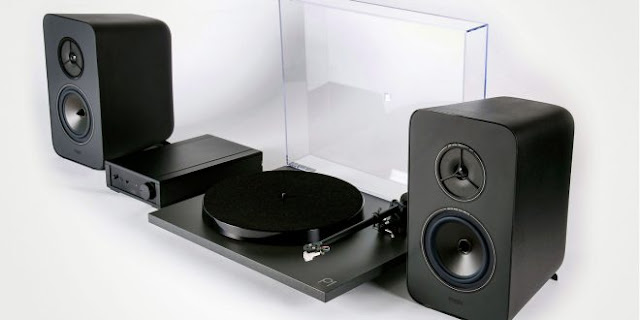
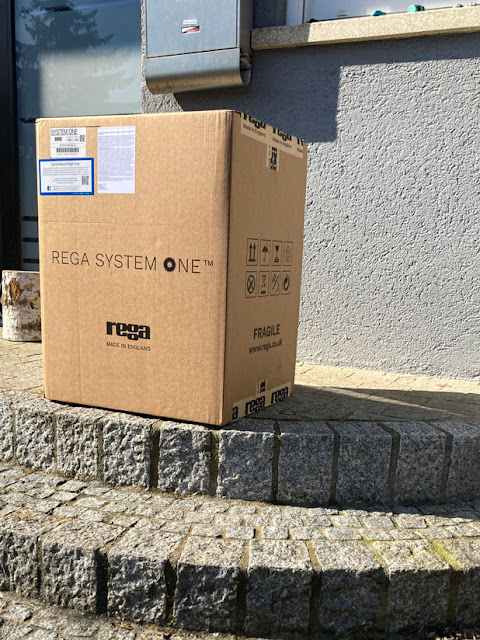

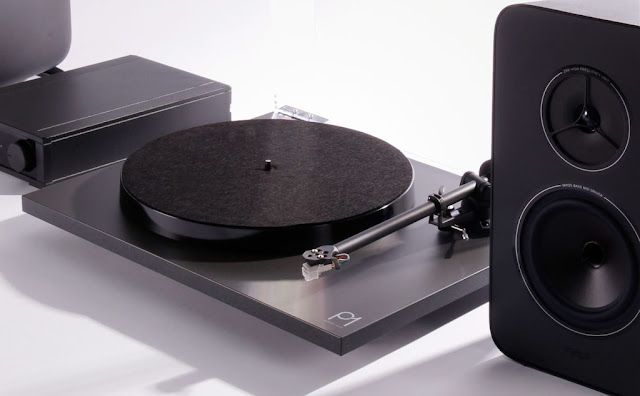




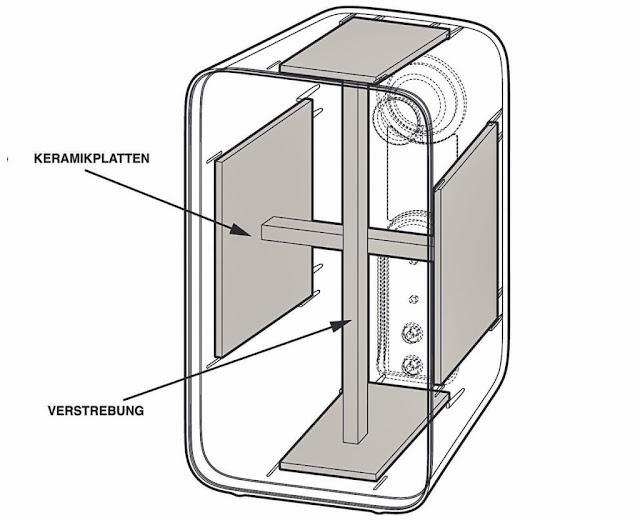



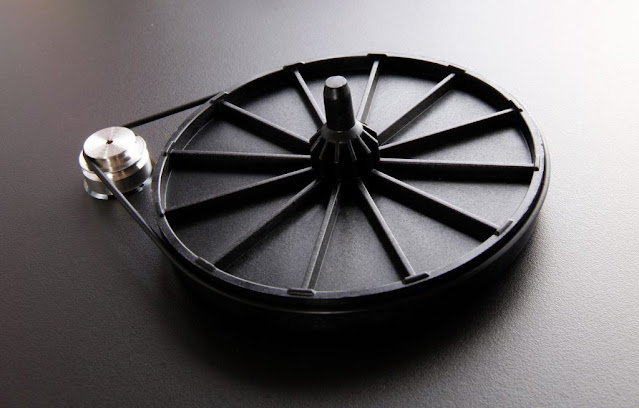
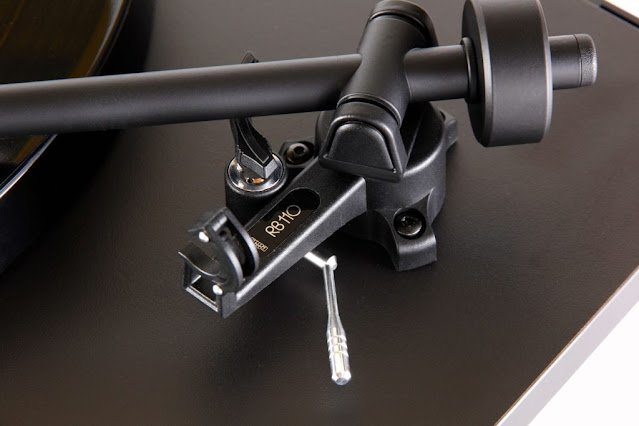
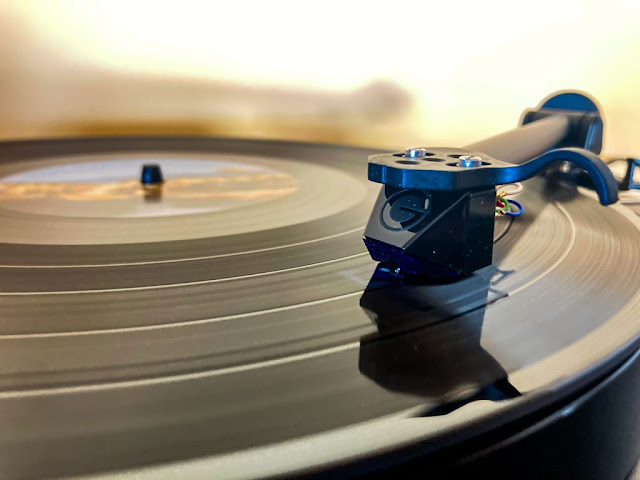
.jpg)
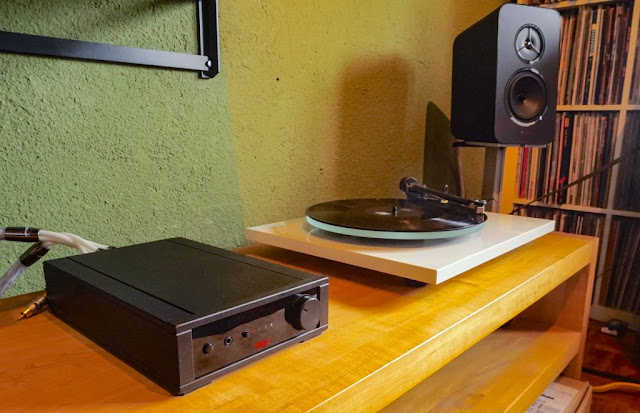








.jpg)



0 Comments